Abdominal Surgery
Abdominal surgery is a distinct medical specialty that involves the radical treatment of diseases of the abdominal cavity and retroperitoneal space. Acute abdominal pain, digestive disorders, tumors, or complications of chronic diseases are often the reasons for seeking specialist help. Modern treatment approaches include both traditional open surgeries and minimally invasive laparoscopic techniques, which significantly shorten recovery times. Timely intervention allows for the effective treatment of a wide range of problems, from appendicitis and hernias to complex oncological diseases.
At the K+31 Clinic in Moscow, surgeries are performed using cutting-edge equipment, ensuring high precision, effectiveness, and safety. A properly performed surgical procedure returns the patient to a full life, and comprehensive rehabilitation consolidates the achieved results.

specialists

equipment

treatment
When is the help of an abdominal surgeon needed?
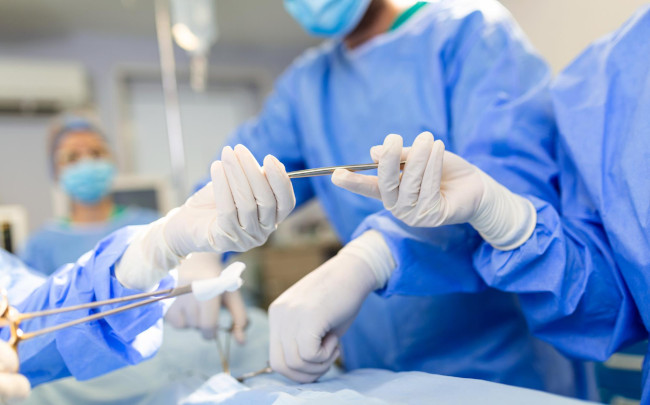
Consultation and intervention by a surgical specialist are necessary in situations where therapeutic treatments have exhausted their potential or are initially ineffective. Assistance is required for a wide range of conditions, which can be roughly divided into three key categories: emergency, planned, and post-diagnosis.
Emergency cases require immediate surgical intervention to save the patient's life. These include:
- Acute appendicitis, threatening the development of peritonitis
- Perforated ulcer – the formation of a through-and-through defect in the organ wall
- Acute intestinal obstruction – impaired evacuation of intestinal contents, which can lead to necrosis of a section of the intestine
- Strangulated hernia – compression of abdominal organs in the hernial orifice, disrupting their blood supply
- Destructive acute pancreatitis
- Trauma of abdominal organs with internal bleeding – rupture of the spleen, liver

In planned cases, surgery is a natural stage of treatment after a comprehensive examination. As a rule, intervention is indicated for the following diagnoses:
- Cholelithiasis with chronic symptoms or risk of complications
- Benign and malignant neoplasms of the abdominal organs
- Chronic bowel diseases – Crohn's disease, ulcerative colitis, complicated by fistulas, strictures, or bleeding
- Abdominal wall hernias not complicated by strangulation but causing discomfort
- Portal hypertension and its consequences
Often, a referral to an abdominal surgeon is issued by a gastroenterologist, oncologist, or general practitioner after an ultrasound, CT scan, or endoscopy reveals a pathology requiring abdominal surgery, such as intestinal polyps with a high risk of malignancy or pancreatic cysts.
Diseases requiring surgical intervention
Appendicitis
This is an inflammation of the vermiform appendix, or appendix. The main cause is believed to be obstruction of the appendix by fecal stones, hyperplastic lymphoid follicles, or foreign bodies, which leads to bacterial overgrowth and inflammation.
Symptoms typically begin with non-localized pain in the epigastric region or around the navel, which then migrates to the right iliac region. The pain is often accompanied by vomiting, loss of appetite, and low-grade fever.
Surgical treatment—appendectomy—is the only option and is performed on an emergency basis. Laparoscopic appendectomy, in which the appendix is removed through several small incisions, is considered the gold standard. This method minimizes trauma to surrounding tissues, reduces the risk of postoperative complications, and significantly speeds recovery. Open access is used in cases of diffuse peritonitis or in the presence of anatomical features that make laparoscopic access impossible.
Gallstone disease
This is the formation of calculi, or stones, in the gallbladder and bile ducts. Causes often include impaired cholesterol and bilirubin metabolism, bile stasis, obesity, poor diet, and a hereditary predisposition.
Symptoms usually arise when stones move and biliary colic develops. This is a sharp, intense pain in the right side, which can radiate to the back, accompanied by nausea, vomiting, and a bitter taste in the mouth. The most common complications are acute cholecystitis, obstructive jaundice, and acute biliary pancreatitis.
The most effective treatment is considered to be cholecystectomy—removal of the gallbladder. Elective laparoscopic cholecystectomy is a minimally invasive procedure that allows the patient to return to an active lifestyle within a few days. Modern research confirms that the body successfully adapts to the absence of the gallbladder, and the patient's quality of life is not affected.
Peptic Ulcer
This is a chronic disease characterized by the formation of defects in the mucous membrane of the stomach and duodenum. The bacterium Helicobacter pylori plays a key role in the pathogenesis. Provoking factors include long-term use of NSAIDs, stress, and increased gastric acidity.
Surgical intervention is required not for the ulcer itself, but rather for the development of its complications:
- Perforation – the formation of a through defect in the organ wall
- Pyloric stenosis – cicatricial narrowing of the gastric outlet, impairing the movement of food
- Penetration – ulcer growth into adjacent organs, such as the pancreas
- Malignancy – malignant transformation of the ulcer
Abdominal Tumors
They can occur in any organ. Benign tumors (polyps, adenomas, lipomas, myomas) are often asymptomatic but can cause bleeding, obstruction, or serve as a precursor to malignancy. Their removal is performed routinely using laparoscopy or endoscopic methods.
Malignant tumors are the main reason for complex and extensive abdominal surgeries. Symptoms are varied and nonspecific. These may include unexplained weight loss, prolonged fever, pain, dyspepsia, and anemia. Treatment is usually comprehensive and includes radical surgery, often combined with chemotherapy and radiation therapy.
Hernias
This is a protrusion of internal organs through a defect in the musculoaponeurotic layer. The main cause is weak connective tissue combined with increased intra-abdominal pressure. Hernias often develop due to heavy physical labor, chronic straining coughing, constipation, and obesity. They are localized in the groin, around the umbilical ring, and near scars left after surgery.
The main danger is strangulation, when organs are compressed within the hernial orifice, leading to necrosis and peritonitis. This condition requires emergency surgery. Herniorrhaphy is performed both open and laparoscopically. The modern standard is tension-free hernioplasty, where the defect is covered with a special mesh implant, preventing recurrence.
Main areas of work
Modern abdominal surgery is a combination of high-tech disciplines, each focused on solving a specific set of problems.

The main ones among them are:
- Minimally invasive and laparoscopic surgery This is a priority and rapidly developing area, which has become the gold standard for many cases. Surgeons perform procedures through several small incisions using a video camera and specialized instruments. Over 90% of elective surgeries in the abdominal department of the K+31 Clinic are performed using these methods
- Laparotomy Surgery Despite the rapid development of minimally invasive technologies, open abdominal surgeries remain an important component of abdominal surgery. This approach, which involves making an incision in the anterior abdominal wall, provides the surgeon with maximum visibility and freedom of manipulation in complex anatomical conditions. Laparotomy is indispensable for extensive and radical interventions for malignant tumors, massive adhesions, severe abdominal injuries with profuse bleeding, and in the event of intraoperative complications
Types of operations in abdominal surgery
Gastric Surgery
- Gastric resection is the removal of a portion of the organ. In cases of peptic ulcer disease, the affected area is excised, creating an anastomosis (stomosis) between the stomach stump and the intestine. In cases of oncology, a more extensive gastrectomy is performed—complete removal of the stomach with the creation of an artificial stomach from a loop of the small intestine.
- Mucosal resection. Minimally invasive endoscopic surgeries with access through the mouth to remove early tumors and polyps without incisions.
- Bariatric surgery. A relatively new but highly sought-after field. Gastric bypass and longitudinal resection are performed to treat obesity and type 2 diabetes. These surgeries are aimed at weight loss and normalizing metabolism.
Bowel Surgery
- Bowel resection. Removal of the affected section (e.g., due to a tumor, Crohn's disease with stenosis, or diverticulitis) followed by suturing the ends of the intestine together (anastomosis). Depending on the location, hemicolectomy, sigmoidectomy, and other methods are distinguished.
- Colostomy and ileostomy. Creation of a temporary or permanent opening (stoma) in the anterior abdominal wall to drain intestinal contents. This may be part of a multi-stage treatment, for example, in cases of obstruction or after rectal resection.
- Laparoscopic appendectomy. The gold standard for removing an inflamed appendix.
Gallbladder and Bile Duct Surgeries
- Laparoscopic cholecystectomy. The most common elective abdominal surgery, aimed at removing the gallbladder due to cholelithiasis. Performed through four small punctures.
- Choledochotomy. Opening the common bile duct to remove stones (choledocholithiasis). Often supplemented by the placement of a Kehr drain.
- Reconstructive biliary tract surgery. Aimed at restoring bile flow after complications or tumor-related stenosis.
Pancreatic Surgery
- Whipple's Procedure. A radical procedure performed for pancreatic head cancer and tumors of the major duodenal papilla. It involves removal of the head of the pancreas, part of the stomach, duodenum, gallbladder, and part of the ducts, followed by complex reconstruction.
- Distal Pancreatectomy. Removal of the tail and body of the pancreas, most often due to tumors or chronic pancreatitis. Often performed in conjunction with spleen removal.
- Necrequestrectomy. Minimally invasive or open removal of necrotic tissue in severe destructive pancreatitis.
Plastic and Reconstructive Surgeries
- Hernioplasty. Repair of hernias of various locations using implants to strengthen weak areas of the abdominal wall.
- Gastrointestinal Reconstruction. Restoring intestinal continuity after a previously existing stoma (stoma closure).
- Plasty for cicatricial strictures and fistulas. Excision of cicatricial stenosis and closure of pathological tracts that arise as complications after surgery or inflammatory diseases.
- Abdominoplasty. Aimed at correcting the shape of the anterior abdominal wall and removing excess skin and subcutaneous fat that are not responsive to diet and exercise.
How does the intervention take place?

Abdominal surgery treatment is a clearly structured process consisting of three main stages: preparation, the surgery itself, and rehabilitation. Each stage is carefully planned by a team of specialists, taking into account the individual characteristics of the patient and the nature of the disease. This comprehensive approach is aimed at minimizing risks, ensuring maximum effectiveness of the intervention, and a speedy recovery.
Preparation for Surgery
The preparatory stage begins after the decision is made to undergo surgery. It includes a comprehensive examination to identify possible risks and develop an optimal treatment plan. The patient receives a consultation with a general practitioner and, if necessary, with specialized specialists, such as a cardiologist or endocrinologist, to address chronic conditions.
Lifestyle changes are an important element of preparation, including following a preoperative diet, quitting smoking and alcohol, and taking prescribed medications to normalize blood counts and blood pressure. The day before surgery, bowel cleansing is performed, if necessary, and a fasting period is observed.

Procedure of the Surgery
Depending on the diagnosis, the scope of the planned intervention, and the patient's condition, the surgery is performed using one of two main methods:
- Laparoscopic (minimally invasive) method
- Laparotomy (open) method
All interventions are performed under anesthesia – general or spinal anesthesia. During the surgery, the anesthesia team continuously monitors vital functions.
Postoperative Period and Recovery
Patient management after surgery directly depends on the scope of the intervention and the method used.
After laparoscopic surgery, the patient is active within the first day. Pain is minimal. Discharge from the hospital is possible on days 2-4.
After laparotomy surgery, the hospital stay is longer. The patient remains in the department for observation for 7-14 days. He requires more powerful pain relief and a gradual resumption of activity.
General information
Frequently asked questions
How long does the surgery last?
When can I return to work after treatment?
Are there scars?
Will there be abdominal pain after laparoscopy?

This award is given to clinics with the highest ratings according to user ratings, a large number of requests from this site, and in the absence of critical violations.

This award is given to clinics with the highest ratings according to user ratings. It means that the place is known, loved, and definitely worth visiting.

The ProDoctors portal collected 500 thousand reviews, compiled a rating of doctors based on them and awarded the best. We are proud that our doctors are among those awarded.
Make an appointment at a convenient time on the nearest date
Price
Other services







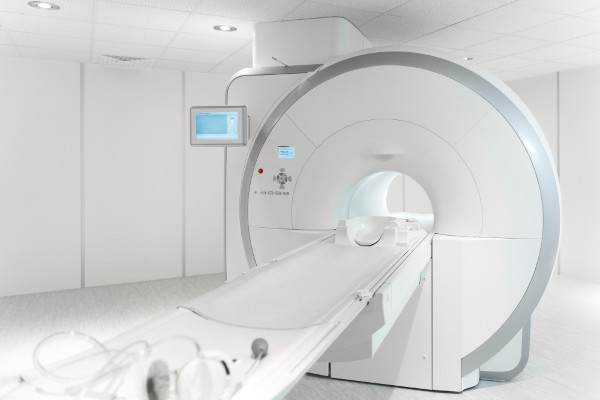
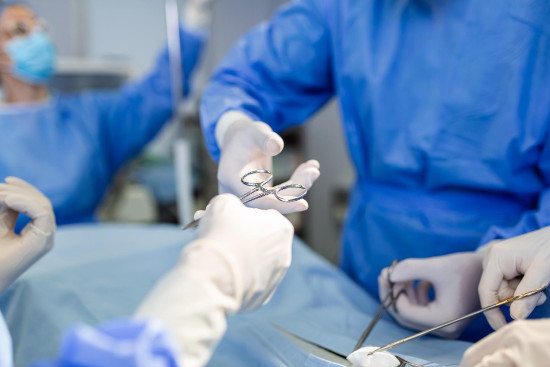











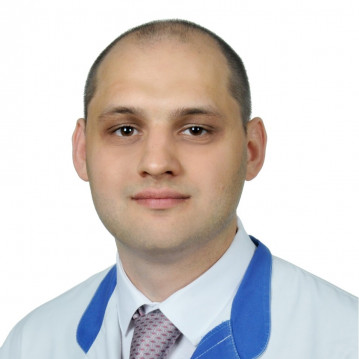




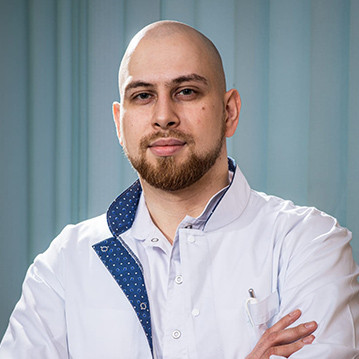

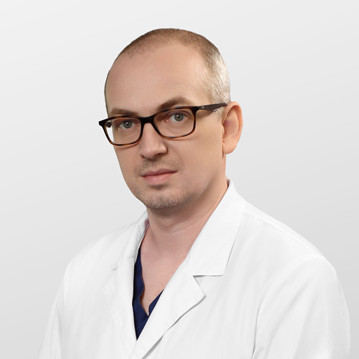


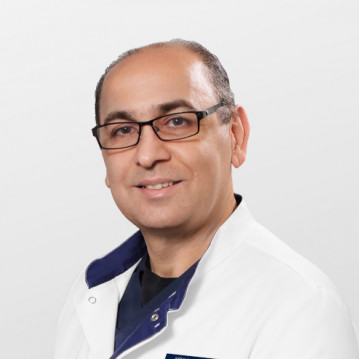











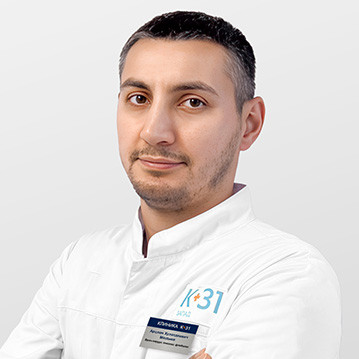



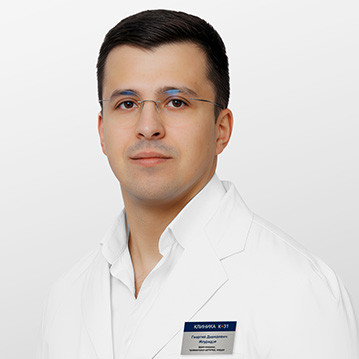







What is abdominal surgery?
This is a fundamental section of general surgery, focusing on the diagnosis and surgical treatment of pathologies of the digestive, hepatobiliary, and retroperitoneal systems. Abdominal surgery departments address immediate threats to the patient's life, such as ulcer perforation or acute intestinal obstruction, and also routinely address various clinical problems associated with chronic diseases, tumors, and congenital anomalies.
An abdominal surgeon possesses comprehensive knowledge of the anatomy of the entire abdominal cavity, enabling them to conduct differential diagnostics and perform interventions on a wide variety of organs, including the stomach, intestines, liver, gallbladder, pancreas, and spleen.
Modern abdominal surgery strives for minimally invasive procedures. Priority is given to laparoscopic and robotic-assisted techniques, where surgeries are performed through multiple pinpoint incisions. This significantly reduces the trauma of the procedure, minimizes blood loss, and shortens the postoperative recovery period. However, open surgeries remain in demand in complex cases requiring extensive intervention or in cases of complicated disease. Regardless of the specific method, abdominal surgery ultimately aims to achieve the main goal – restoring health and improving the patient's quality of life with minimal risks.